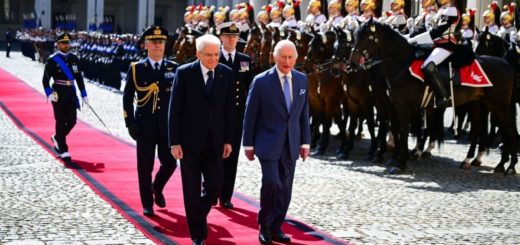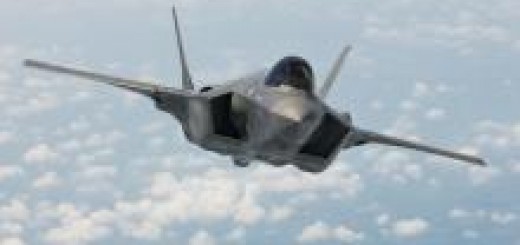Embraer and Lithuania forge new defense industrial alliance in rearming Europe
{loadposition bannertop}
{loadposition sidebarpub}
According to information published by Embraer on August 2, 2025, the Brazilian aerospace company has confirmed its intention to forge a comprehensive industrial partnership with Lithuania, reinforcing its strategic expansion across Europe. The announcement follows the Lithuanian government’s selection of the C-390 Millennium as its next-generation multi-mission military transport aircraft. In recent weeks, Embraer officials conducted a high-level visit to Lithuania, where they engaged with national institutions and defense-related industries to initiate discussions on localizing support and establishing a long-term operational presence.Follow Army Recognition on Google News at this link
The C-390 Millennium is a versatile tactical airlifter capable of transporting up to 26 tons, performing aerial refueling, medevac, paratroop drops, and operating from semi-prepared runways (Picture source : Embraer).
Embraer is a global leader in aerospace innovation, with a strong defense portfolio that includes the A-29 Super Tucano light attack and training aircraft, the KC-390 Millennium airlifter, and advanced radar and ISR solutions developed through its Defense & Security division. The company has proven expertise in integrating mission systems, managing complex aerostructures, and providing turnkey logistics support. Its platforms are operated by more than 60 armed forces worldwide, including NATO members and strategic U.S. partners, reinforcing its growing relevance within transatlantic defense networks.
Embraer’s initiative reflects its commitment not only to delivering the C-390 Millennium with full-spectrum support solutions but also to contributing directly to Lithuania’s ambition of developing sovereign defense industrial capabilities. The partnership is being actively supported by both the Lithuanian Ministry of Defense and the Ministry of Economy and Innovation, highlighting a cross-governmental approach to defense-industrial development. Embraer is exploring potential cooperation in critical sectors such as maintenance, repair and overhaul (MRO), software and systems engineering, and component manufacturing.
The Embraer C-390 Millennium is a high-performance tactical airlift platform designed to replace legacy medium-lift transports such as the C-130 Hercules. The aircraft is powered by two International Aero Engines V2500-E5 turbofan engines, each producing 31,330 pounds of thrust, enabling a top speed of Mach 0.8 and a range of 2,500 nautical miles with a 23-ton payload. The aircraft can operate at altitudes up to 36,000 feet and from short or semi-prepared runways as short as 1,200 meters. The C-390 is equipped with a full glass cockpit featuring five LCD multifunction displays, dual mission computers, and an integrated avionics suite provided by Rockwell Collins, enabling advanced navigation, terrain-following, and low-level flight capabilities in contested airspace.
Its cargo hold is fully compatible with NATO-standard pallets (up to 7 463L pallets) and can transport a wide array of loads including light armored vehicles, helicopters, artillery systems, and up to 80 fully equipped troops or 66 paratroopers. It supports both rear ramp and side door operations for simultaneous troop and cargo deployment and is certified for aerial delivery of cargo up to 19 metric tons. Aerial refueling capabilities are supported via a removable probe system, and the aircraft itself can also be configured as a tanker with Cobham underwing pods. Survivability is enhanced through ballistic protection in critical areas, self-sealing fuel tanks, redundant systems, and compatibility with self-defense electronic warfare suites.
This development holds significant implications for the U.S. and broader NATO defense-industrial framework. As Lithuania intensifies its local defense production with Embraer’s support, it reduces long-term logistical dependencies while contributing to allied supply chain resilience in Eastern Europe. With Embraer increasingly interoperating with U.S. standards and suppliers, this Lithuanian collaboration could open future transatlantic co-production opportunities and facilitate joint sustainment operations under NATO’s logistics command structures. The expansion also indirectly supports U.S. security objectives by reinforcing allied defense self-sufficiency on NATO’s eastern flank.
The scope of the Lithuania-Embraer partnership could include the local production or assembly of C-390 subcomponents, such as hydraulic and electrical systems, avionics racks, or cargo handling elements, as well as software packages for mission management and fleet monitoring. With support from Lithuania’s tech and precision engineering sector, future workshare may also involve the co-development of secure communications modules and modular mission kits for C-390 variants. If successful, Lithuania could position itself as a key node for MRO services and spare parts distribution to C-390 operators across Northern and Eastern Europe.
Lithuania’s strategic location bordering Belarus and Russia’s Kaliningrad exclave has made it a focal point of NATO’s eastern defense posture since the 2014 annexation of Crimea. Its membership in the Enhanced Forward Presence initiative, along with recent increases in defense spending and military modernization, underscores its central role in regional deterrence. The deepening of industrial ties with Embraer aligns with Lithuania’s broader ambition to transform from a defense consumer into a defense contributor. At a time of elevated geopolitical tension and persistent hybrid threats in the Baltic region, this announcement signals a tactical and industrial shift that strengthens NATO’s collective resilience.

{loadposition bannertop}
{loadposition sidebarpub}
According to information published by Embraer on August 2, 2025, the Brazilian aerospace company has confirmed its intention to forge a comprehensive industrial partnership with Lithuania, reinforcing its strategic expansion across Europe. The announcement follows the Lithuanian government’s selection of the C-390 Millennium as its next-generation multi-mission military transport aircraft. In recent weeks, Embraer officials conducted a high-level visit to Lithuania, where they engaged with national institutions and defense-related industries to initiate discussions on localizing support and establishing a long-term operational presence.
Follow Army Recognition on Google News at this link
The C-390 Millennium is a versatile tactical airlifter capable of transporting up to 26 tons, performing aerial refueling, medevac, paratroop drops, and operating from semi-prepared runways (Picture source : Embraer).
Embraer is a global leader in aerospace innovation, with a strong defense portfolio that includes the A-29 Super Tucano light attack and training aircraft, the KC-390 Millennium airlifter, and advanced radar and ISR solutions developed through its Defense & Security division. The company has proven expertise in integrating mission systems, managing complex aerostructures, and providing turnkey logistics support. Its platforms are operated by more than 60 armed forces worldwide, including NATO members and strategic U.S. partners, reinforcing its growing relevance within transatlantic defense networks.
Embraer’s initiative reflects its commitment not only to delivering the C-390 Millennium with full-spectrum support solutions but also to contributing directly to Lithuania’s ambition of developing sovereign defense industrial capabilities. The partnership is being actively supported by both the Lithuanian Ministry of Defense and the Ministry of Economy and Innovation, highlighting a cross-governmental approach to defense-industrial development. Embraer is exploring potential cooperation in critical sectors such as maintenance, repair and overhaul (MRO), software and systems engineering, and component manufacturing.
The Embraer C-390 Millennium is a high-performance tactical airlift platform designed to replace legacy medium-lift transports such as the C-130 Hercules. The aircraft is powered by two International Aero Engines V2500-E5 turbofan engines, each producing 31,330 pounds of thrust, enabling a top speed of Mach 0.8 and a range of 2,500 nautical miles with a 23-ton payload. The aircraft can operate at altitudes up to 36,000 feet and from short or semi-prepared runways as short as 1,200 meters. The C-390 is equipped with a full glass cockpit featuring five LCD multifunction displays, dual mission computers, and an integrated avionics suite provided by Rockwell Collins, enabling advanced navigation, terrain-following, and low-level flight capabilities in contested airspace.
Its cargo hold is fully compatible with NATO-standard pallets (up to 7 463L pallets) and can transport a wide array of loads including light armored vehicles, helicopters, artillery systems, and up to 80 fully equipped troops or 66 paratroopers. It supports both rear ramp and side door operations for simultaneous troop and cargo deployment and is certified for aerial delivery of cargo up to 19 metric tons. Aerial refueling capabilities are supported via a removable probe system, and the aircraft itself can also be configured as a tanker with Cobham underwing pods. Survivability is enhanced through ballistic protection in critical areas, self-sealing fuel tanks, redundant systems, and compatibility with self-defense electronic warfare suites.
This development holds significant implications for the U.S. and broader NATO defense-industrial framework. As Lithuania intensifies its local defense production with Embraer’s support, it reduces long-term logistical dependencies while contributing to allied supply chain resilience in Eastern Europe. With Embraer increasingly interoperating with U.S. standards and suppliers, this Lithuanian collaboration could open future transatlantic co-production opportunities and facilitate joint sustainment operations under NATO’s logistics command structures. The expansion also indirectly supports U.S. security objectives by reinforcing allied defense self-sufficiency on NATO’s eastern flank.
The scope of the Lithuania-Embraer partnership could include the local production or assembly of C-390 subcomponents, such as hydraulic and electrical systems, avionics racks, or cargo handling elements, as well as software packages for mission management and fleet monitoring. With support from Lithuania’s tech and precision engineering sector, future workshare may also involve the co-development of secure communications modules and modular mission kits for C-390 variants. If successful, Lithuania could position itself as a key node for MRO services and spare parts distribution to C-390 operators across Northern and Eastern Europe.
Lithuania’s strategic location bordering Belarus and Russia’s Kaliningrad exclave has made it a focal point of NATO’s eastern defense posture since the 2014 annexation of Crimea. Its membership in the Enhanced Forward Presence initiative, along with recent increases in defense spending and military modernization, underscores its central role in regional deterrence. The deepening of industrial ties with Embraer aligns with Lithuania’s broader ambition to transform from a defense consumer into a defense contributor. At a time of elevated geopolitical tension and persistent hybrid threats in the Baltic region, this announcement signals a tactical and industrial shift that strengthens NATO’s collective resilience.







